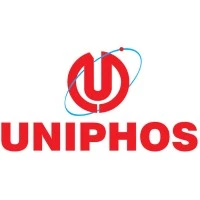Pest infestations pose significant threats to agriculture, public health, and various industries. Fumigation, the process of using chemicals to control or eliminate pests, is a widely adopted solution. However, the success of fumigation relies heavily on effective monitoring throughout the entire process. In this article, we will delve into the importance of fumigation monitoring and its role in ensuring pest-free environments.
Precision and Efficacy:
One of the primary reasons fumigation monitoring is indispensable lies in its ability to ensure precision and efficacy. Fumigants, the chemicals used in the process, must be distributed evenly to reach all target areas. Monitoring devices, such as gas leak detectors and sensors, play a crucial role in gauging the concentration of fumigants in different zones. This precision ensures that pests are exposed to lethal doses, maximizing the effectiveness of the fumigation process.
Safety Assurance:
Fumigation involves the use of potent chemicals that can be hazardous to humans, animals, and the environment. Continuous monitoring helps in maintaining safety levels by detecting any abnormal rise in fumigant concentration. This early detection allows for prompt intervention, preventing potential harm to both the personnel involved in the process and the surrounding ecosystem. Safety protocols are then implemented based on real-time monitoring data, ensuring a secure fumigation environment.
Regulatory Compliance:
Governments and environmental agencies establish strict regulations governing fumigation practices to safeguard human health and the environment. Fumigation monitoring is essential for compliance with these regulations. Regular monitoring ensures that fumigation activities adhere to specified concentration limits and exposure durations. This compliance not only protects the ecosystem but also shields businesses and individuals from legal ramifications associated with non-compliance.
Mitigation of Environmental Impact:
Fumigation, if not executed properly, can have adverse effects on the environment. Excessive fumigant release can lead to air and water pollution. Monitoring helps in minimizing the environmental impact by preventing over-application of chemicals. Real-time data allows for adjustments in the fumigation process to ensure that only the necessary amount of fumigants is used, striking a balance between effective pest control and environmental conservation.
Preventing Residue Issues:
Residue from fumigants can persist on surfaces and commodities after the fumigation process is complete. Monitoring helps in tracking and managing residue levels. This is particularly important in industries such as agriculture, where residue on crops can impact food safety and trade. By monitoring residue levels, appropriate actions can be taken to mitigate any potential risks and ensure that products meet regulatory standards.
Early Detection of Issues:
Fumigation monitoring provides a real-time view of the fumigation environment. Any deviations from the expected levels can be quickly identified, allowing for early detection of issues. This proactive approach enables fumigators to address problems promptly, preventing potential failures in pest control. Whether it's a malfunctioning fumigation equipment or an unexpected environmental factor, early detection is key to ensuring the success of the fumigation process.
In conclusion, the importance of fumigation monitoring cannot be overstated. It is a critical component in the success of pest control efforts, safeguarding human health, ensuring environmental compliance, and promoting the efficacy of fumigation processes. As industries continue to rely on fumigation for pest management, investing in fumigation instruments is an essential step toward achieving pest-free environments while minimizing the associated risks.

